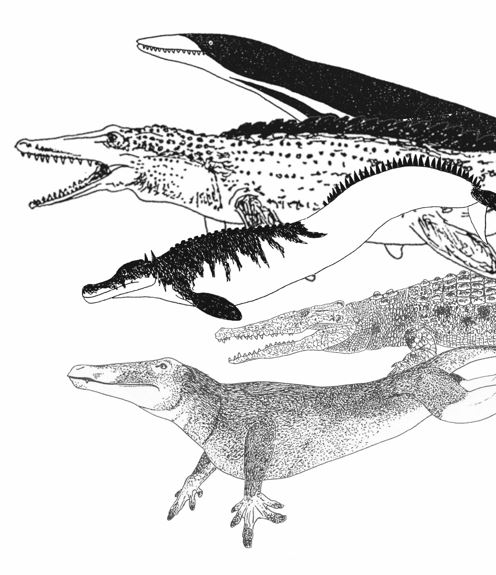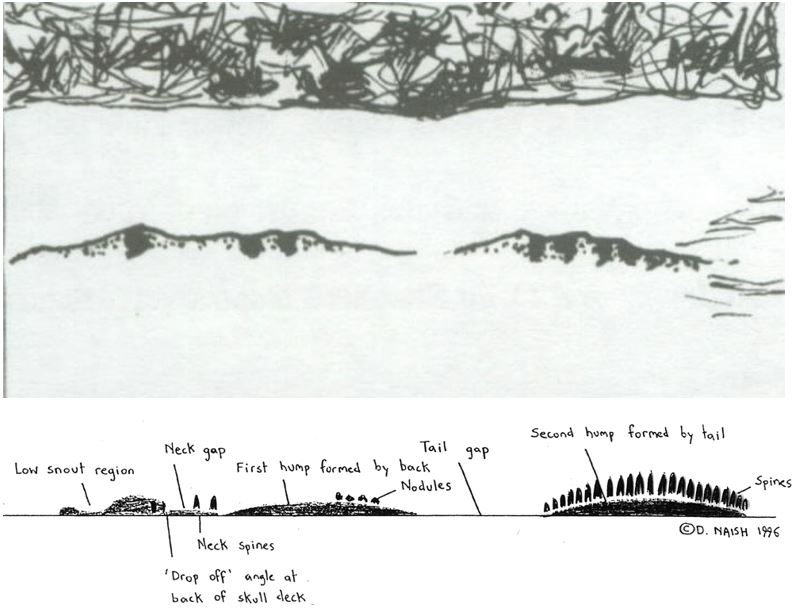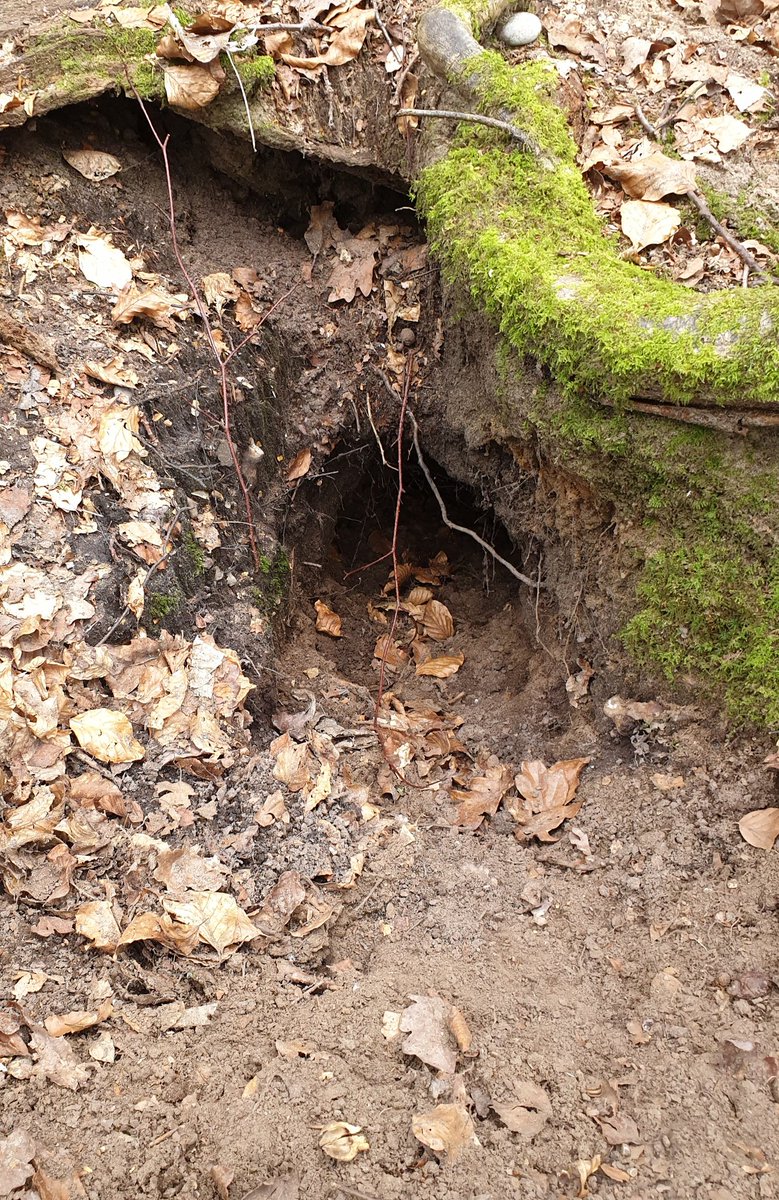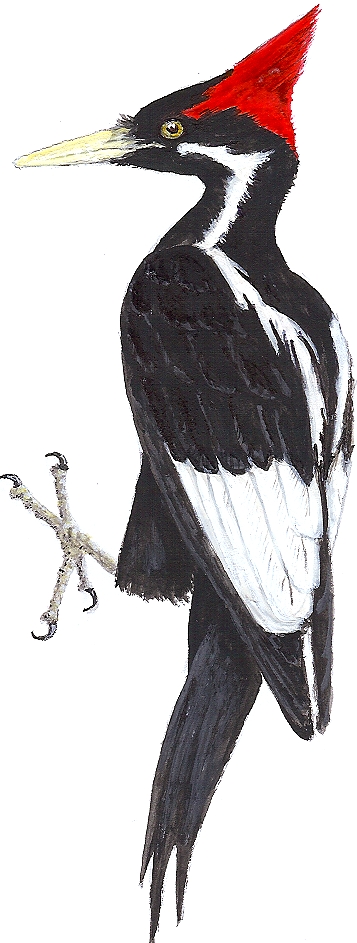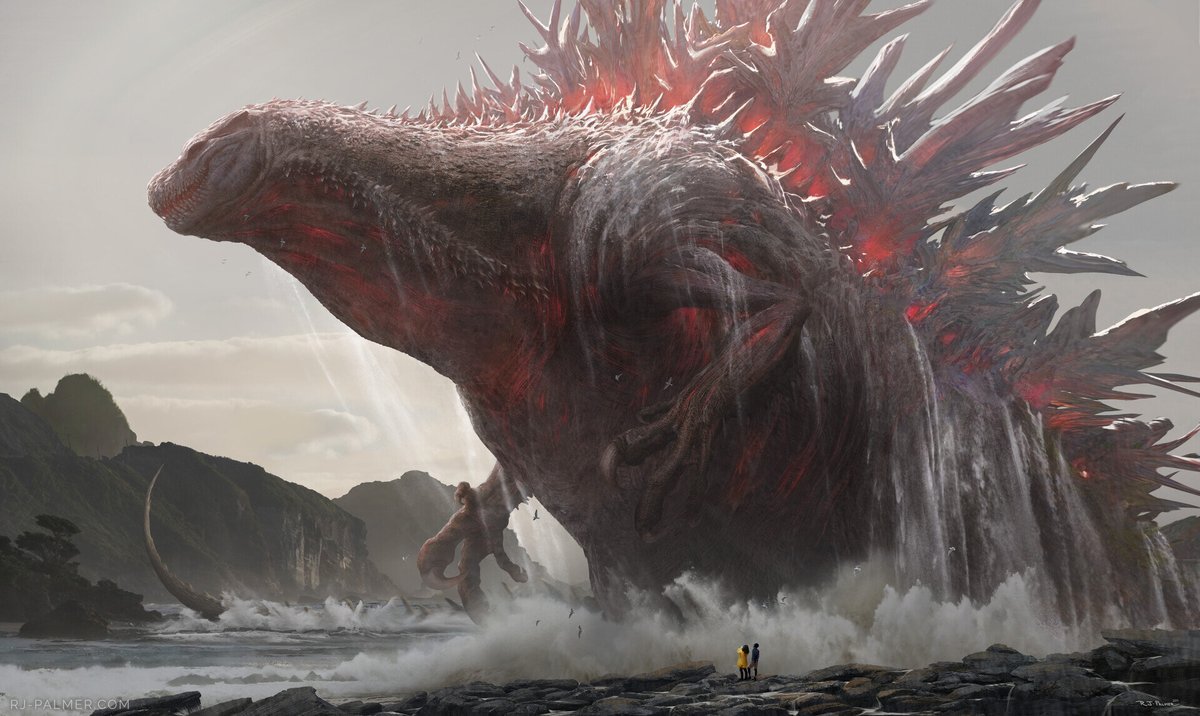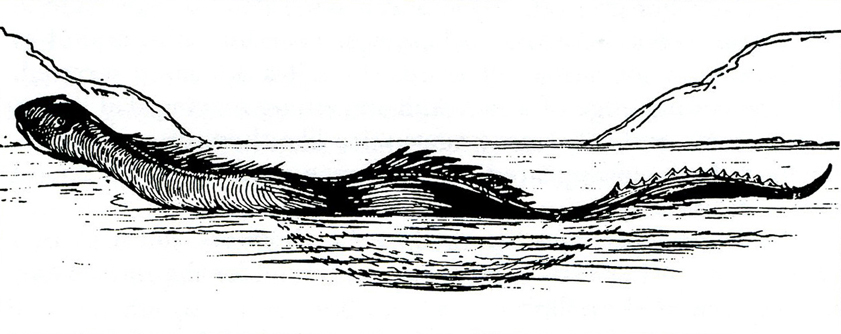
You might have heard the news about photos claimed to show LIVE #THYLACINES. Inspired, I’m here going to discuss other alleged LIVING #THYLACINE photos. Yes, it’s another #TetZoocryptomegathread, wherein I take a detailed look at #cryptozoology-themed photographic evidence... 





This time round, it’s the turn of the Kevin Cameron photos of November 1984, taken in south-west Western Australia and said to show a live #thylacine...
#Thylacines, as you surely know, are not supposed to be living on the Australian mainland in modern times and are also supposed to have gone extinct sometime around 1936… 

So, did Cameron really succeed in photographing something radically significant and surprising?
The backstory to Cameron’s photos involves the fact that people right across mainland Australia (east to west, north to south) have claimed – from the 1930s all the way to the present – #thylacine encounters…
Over 500 ‘persisting mainland #thylacine’ reports are on record. At least a few cryptozoologists take the potential existence of these animals seriously, but the mainstream zoological take…
… is that the sightings are wishful thinking, bs (notably, correlated with impending development or destruction of the relevant patch of wild land), or misidentifications of foxes (as in the image here, a still from a piece of film), feral dogs or even wallabies or quolls… 

I should add, for completeness, that there are actually a few mentions in the literature of the mid-1800s of mainland #thylacines too (from seemingly authoritative sources), but...
... it’s no longer clear whether they’re accurate or the result of confusion or error (see Robert Paddle’s 2000 The Last Tasmanian Tiger for the full details)… #thylacines #books 

Incidentally, I covered part of the ‘mainland thylacine’ topic previously in the #TetZoocryptomegathread on the Rilla Martin 'Ozenkadnook tiger' case of 1964, go here for that thread 
https://twitter.com/TetZoo/status/1299292569705353217… #cryptozoology

The photos we’re going to look at here emerged from a Western Australian case in which a Mr Sid Slee became confident about the presence of thylacines on his rural property, named Hillside (located near Busselton at the edge of the Yoongarillup area in WA; map from Google Maps)… 
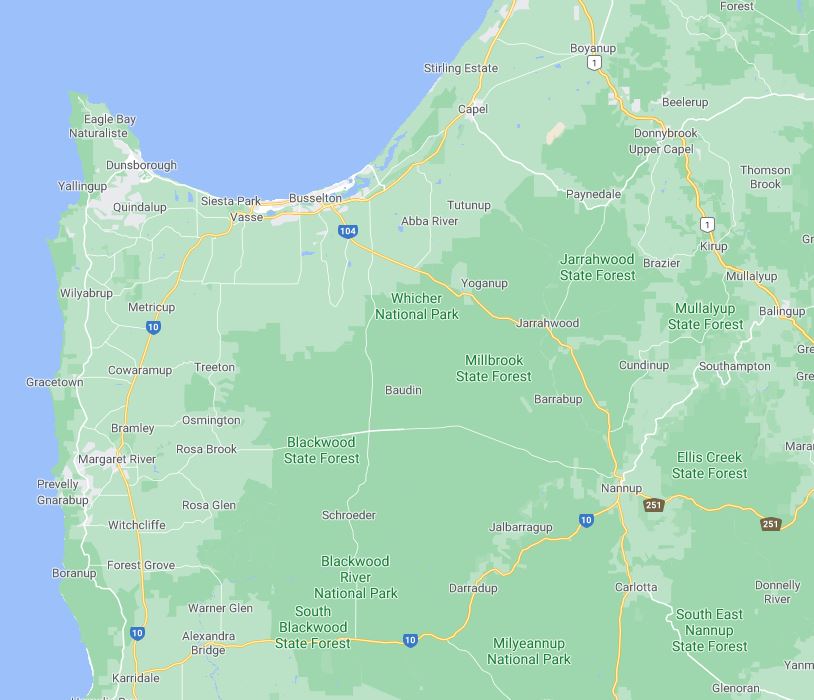
Slee (who died in 2015) felt so strongly about the presence of #thylacines here that Hillside is famously decorated with a sign proclaiming it to be ‘The Haunt of the Marsupial Wolf’… 

Slee wrote a book with the same title. I’ve never seen a copy, but here’s Warren Darragh (of amateur group the Thylacine Research Unit) with one, from a youtube review… 

The #thylacines which Slee claimed to see (some of which were corpses, witnessed – apparently – during the 1940s) were odd....
One was jet black, one lacked stripes and was just brown, and one had a dark stripe extending the length of its backbone (from ears to tail) and stripes across its backlegs….
There’s been speculation that mainland thylacines might be different from Tasmanian ones. That’s not impossible, but it’s a stretch to imagine that there might be _this much_ variation in a single mainland population, so I think it’s right to be suspicious of Slee’s claims…
Slee also wrote about finding dead wallabies and kangaroos killed by #thylacines, supposedly with “their heads torn off and completely devoured” (to quote Healy and Cropper)…
He also described the #thylacines he saw as BIG. As in, over 2 metres long (the longest properly recorded accepted individual was 1.9 m long)…
Here, we see the #thylacine interpreted within the paradigm of it being a substantially powerful, wolf-like predator, capable of inflicting fatal damage on animals larger than itself…
This view was (and maybe still is) common among European Australians and has very much influenced public perception of the animal and its size and behaviour. We’ll come back to this issue later… #thylacines
In 1982, Slee’s property was visited by expert tracker and outdoorsman Kevin Cameron of Western Australia’s Agricultural Protection Board (APB), specifically because of Cameron’s interest in Western Australian #thylacine reports…
Cameron tracked (and tried to trap) #thylacines on the Slee property for about a year, finding tracks (photos of which were published by Slee) during this time (they were later identified as unusual dog tracks)…
Cameron – who has indigenous ancestry – was (and still is) a successful hunter and tracker who’d apparently killed over 1300 wild pigs during his time with the APB, sometimes (often?) doing the job with a spear…
He’d also worked with the police and other emergency services in finding lost people and, in one case, located a missing 9-year-old boy who’d been lost in the bush for two days…
His interest in #thylacines was, apparently, partly driven by the fact that he’d badly injured his right leg in 1981, and was thus unable to trek through the bush as normal…
He now mostly directed things from his truck, the ground-work being done by his sons Kevin and Shane, and his dogs Sam and Lobo (this biographical info comes from Healy and Cropper’s 1994 book Out of the Shadows)… 

Cameron and his team claimed their first #thylacine sighting in 1983. It was apparently good and clear, and Cameron and Kevin junior took photos of its tracks…
But the best was yet to come. The reason we’re here is that Cameron claimed, in November 1984, to photograph a live thylacine in the Yoongarillup area…
Cameron was, apparently, alone on this occasion. The animal was preoccupied with digging, its head and forequarters concealed behind a tree, and Cameron managed to sneak up to within 10 metres or perhaps closer… 



And he managed to get 5 colour photos (some sources say 6, but read on). As we’ll see in a moment, these were famously outed in a New Scientist article (cover and contents page shown here). They and their backstory are discussed in various books on Australian #cryptozoology… 



Cameron’s main champion was Athol M. Douglas, a retired Senior Experimental Officer formerly based at the Western Australian Museum in Perth. Douglas published a feature article on Cameron’s photos in New Scientist in April 1986…
It included excellent, large reproductions of Cameron’s photos and caused quite the stir… #thylacines #cryptozoology 



The article featured (at large and satisfying size) three of what were said to be five colour photos taken by Cameron; it also included the backstory to the photos and claimed #thylacine persistence…
The article is positive about the photos: Douglas was sympathetic toward Cameron, believed his various accounts of thylacine observation, and concluded that the photos “are authentic and could be nothing other than a thylacine”…
The article remains the main source for the photos (should you want to see them), but they’ve appeared in a few other places too...
The 1987 book Arthur C. Clarke’s Chronicles of the Strange and Mysterious (written by John Fairley and Simon Welfare) cheekily reproduced the first two pages of the New Scientist article, an interesting way (perhaps) of avoiding negotiating reproduction rights for the photos… 



The best online source for the photos is Chris Rehberg’s excellent Where Light Meets Dark (WLMD) website, which includes a detailed analysis of the photos... wherelightmeetsdark.com.au/examining-the-… I do refer to some of Rehberg’s conclusions and interpretations in the rest of this thread…
The photos appear to show a fox-sized animal, busy at the foot of a tree, in bright daylight, surrounded by vegetation. I especially like Fairley and Welfare’s flowery 1987 description of the photos, which states that....
“They have a lack of artifice, and the position of the animal seems full of naturalness and energy”. Ok, whatever guys…
What’s frustrating about the images is that they only show the animal’s rear half. None of its feet are in shot, nor is anything anterior to the front half of the ribcage… 



Cameron explained that the animal was digging and hence was busy, head-down, and either unaware of his presence or not especially bothered when it was aware of him…
At one point, the animal “stopped digging to look at me squarely” before returning to the task. You might ask why Cameron didn’t photograph the head if this really happened. Supposing that everything _did_ happen as he described…
…. it could still be that the moment concerned was so brief that he wasn’t able to photograph it. Whatever, a tidy mound of grey soil is visible beneath its tail and is meant to provide proof of this digging…. #thylacines #cryptozoology 

Cameron reported in interview that – on seeing the animal – he crept up until he was just a couple of metres away. And he did this by stripping his clothes off, down to his underpants....
Supposedly, this allowed him to make a silent approach. Predictably enough, the media mocked him fairly mercilessly for this claim…
Some writers have used this to cast doubt on Cameron’s claim. Healy and Cropper noted that you’d lose valuable time in stripping your clothes off, and that wearing clothes in the bush is preferable to moving around with exposed skin, what with spiky plants and whatnot…
Also, Cameron has fairly pale skin, and exposing a lot of skin might make you more visible to a nervous animal than otherwise, not less so…
For the sake of argument, I’ll argue, though, that this isn’t necessarily the red flag that some people think it is. Cameron might well have thought – perhaps based on his previous experiences in approaching animals – that clothes could be an encumbrance…
…. and perhaps he felt confident that he had the required time to undress. And… people are weird. Never discount the possibility of someone doing something that seems irrational in an unusual situation. People do irrational things all the time…
A few details in the photos are especially interesting and/or telling, depending on your point of view. Let’s talk about the animal’s appearance to start with…
The animal presents a dorsally convex shape: it looks as if its forequarters are close to the ground and its rump and tail are raised. Because #thylacine hindlimbs were quite long..
… it’s difficult to fit a #thylacine shape into the available space: if the hindleg was in normal standing pose (as shown in the cartoon here), the animal would have to be standing in a surprisingly deep hollow that’s concealed from view…. 

Or maybe it has its hindlimbs folded. Even that would require the animal to be standing in a hollow, but I can’t see that this interpretation is right because the rear margin of the thigh is vertical in the photos, not oblique as it would need to be if the limb were folded… 

We’d see _clear indication_ that the thigh was at a strong angle (as shown in the cartoon here), and we don’t: again, the thigh seems to be vertical… 

My conclusion is that the animal’s leg can only be straight, in which case it must be standing in a deep, hidden pit. That’s not impossible, but it’s difficult to reconcile with the geography of the scene and may - I submit - be inconsistent with the photos being genuine…
Cameron’s animal is dark brown with a stiff, straight tail and a series of dark transverse stripes across the visible part of the body and the base of the tail. The stripes actually appear to extend along the tail’s proximal third (or so)….
The animal’s ground colour looks darker – a different shade of brown – that what we normally see in #thylacine depictions and preserved specimens. To me, it looks dark brown… 

But my colour vision isn’t great, and other people have described it as grey (I just cannot see this as being at all correct, but ok)…
You could argue that this is within a tolerable range of variation, especially if the animal is from a population we know almost nothing about (read on). Or you could argue that it’s a red flag, and makes the animal ‘inaccurate’…
The stripes of the animal also don’t – arguably – match #thylacine stripes as we normally understand them: they look broader, are indistinct and not at all crisp or bold as per those of #thylacines we’re familiar with… 



Again: is this because the animal represents a ‘new’ sort of thylacine (a subspecies or form endemic to the mainland), or is it indicative of a hoax?
At Where Light Meets Dark (WLMD), Chris Rehberg produced a very detailed analysis of the stripe pattern observed in Cameron’s photos and basically showed that the stripe distribution and form does – surprisingly – match that of #thylacines that were photographed alive...
The visible portion of the Cameron #thylacine reveals 7 stripes, whereas a live thylacine used for comparison had 8 visible stripes in the same portion of the body. OK, but they still look odd relative to what we expect… 



The tail is difficult to interpret. Obviously, its straightness is striking and looks unnatural. I don’t think it’s an especially good match for the tails of #thylacines that were photographed alive – it’s just too straight… 



There are one or two photos of live #thylacines that do show very straight tails (look at the montage here), and it might be argued that they demonstrate how a Cameron-like look is, actually, technically ok for the animal… I’m undecided… 

There’s the vague suggestion of 3 dark bands within the tail’s basal third, though this, again, might be pareidolia. Some of the tail’s base looks to be about as dark as the stripes on the body, though this is variable among the photos and hence could be partly due to lighting… 

Photos and preserved specimens show that some #thylacines had one or two slim stripes close to the tail’s root, but not broad stripes as might be present in Cameron’s photos…
Finally, what about the landscape, vegetation and shadows in the photos? What looks like the base of a big, gnarly tree is present on the right side of some of the photos (this is what’s obscuring the thylacine’s head and forequarters)…
Of the photos that have been released, all show grasses slightly obscuring the animal. This could be taken as suspicious: as if Cameron was deliberately getting things in the way so that the subject was harder to see. OR it could be because there was grass in the way…
A decent chunk of out-of-focus foreground vegetation is present in one photo, and what looks like Cameron’s rifle can be seen resting on this vegetation… 

What’s caused the greatest amount of discussion (mostly in the letters pages of New Scientist) is the shadows, which are different from one photo to the next… 



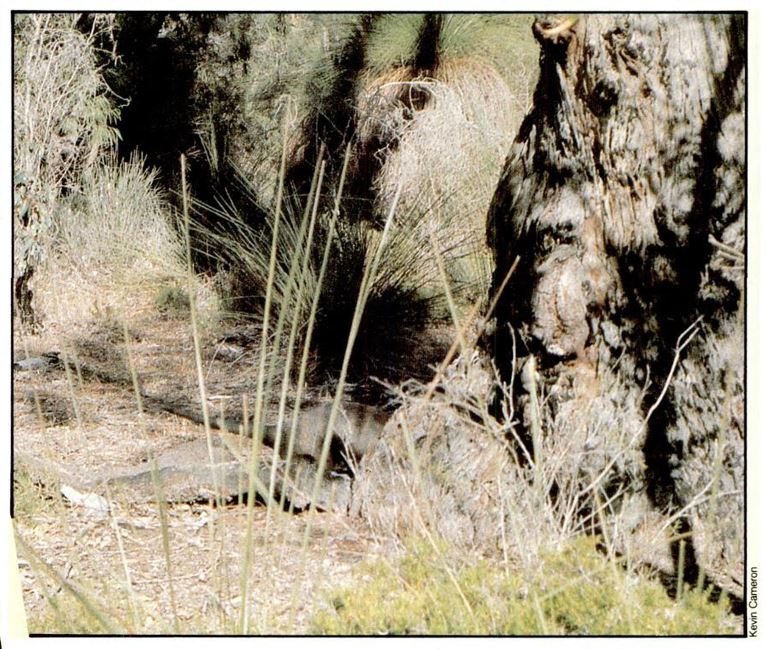

Cameron said that the photos were taken over the span of 20-30 seconds, but what looks like a tall shadow cast by the big tree on the right seemingly changes orientation from a low angle to a more vertical one…
Here, some observers state, is evidence that the photos were actually taken over the course of several hours. If this is correct, it makes things substantially more suspicious, since…
… it’s very difficult to accept that Cameron was observing a live animal – engaged in a single specific activity – over such a course of time. Surely this means that the photos are hoaxed?
Maybe. But things aren’t clear-cut. The photos are also taken from different angles and positions – something consistent with Cameron’s account…
It _might_ just be that the different angles of the shadows are reflective of Cameron’s changing positions as the photos were taken. However, hold this thought…
As mentioned earlier, Cameron’s main champion in public was Athol Douglas, primarily through his 1986 New Scientist article…
About half of the article is devoted to discussion of an entirely separate case: the Mundrabilla Station carcass, a desiccated thylacine body discovered in a cave near the Nullabor Plain in 1960 and generally regarded as ancient: as over 4500 years old… #thylacines #thylacine 



Douglas, however, thought that the carcass might be fully modern (decades or even just years old) on the basis of its relevant freshness, and argued that its claimed great age (arrived at following carbon-14 dating) was due to contamination…
Needless to say, if the Mundrabilla carcass is young, it provides support for the persistence of #thylacines on the Australian mainland. More on this later…
To get back to Douglas’s discussion of Cameron and his photos, Douglas noted in passing that Cameron was illiterate until recently, his reason for mentioning this being that it might strengthen the view that Cameron couldn’t have faked the images…
After all, how could Cameron have even learnt about thylacines if he couldn’t read? Oh, please. This is embarrassingly naïve. While I hope that I don’t really need to say it, I assure you that people who don’t or can’t read are still highly capable of learning stuff…
What’s been noted by all authors who’ve written about this case is that Cameron was not, actually, especially cooperative when it came to providing information on the full backstory to his photos, and was sometimes (often?) “almost aggressive”…
… all of which has been linked with Douglas’s idea that Cameron really did find a live #thylacine, shot it dead, and then posed it and photographed the corpse… 

Let me re-state that more clearly: Douglas believed that Cameron’s first photo was of a live #thylacine, but that all of the later ones were of a corpse. Douglas thought that this might explain a few anatomical details, like the stiff tail (caused by rigor mortis, he suggested)…
However, Douglas didn’t state this in the New Scientist article, but in a later publication: a 1990 article published in the peer-reviewed (and now defunct) journal #Cryptozoology… 

Titled ‘The thylacine: a case for current existence on mainland Australia’, this 1990 article discussed Cameron’s photos, the Mundrabilla carcass, and those eyewitness reports that Douglas deemed interesting and relevant…
Part of Douglas’s focus was on the carcasses of sheep, thought by Douglas to represent #thylacine kills...
As mentioned earlier in this thread (the bit about Sid Slee’s thylacine accounts), there’s a popular idea in thylacine lore that #thylacines were wolf-like mega-predators capable of killing sheep as well as full-sized kangaroos…
This appears to be very much inaccurate. We don’t know nearly as much about #thylacine behaviour and ecology as we might like, but recent studies (in particular a 2020 work led by Douglass Rovinsky @DSRovinsky) indicate…
…. that the #thylacine was mostly less than 20 kg and, ecologically, more akin to fox-type predators than wolf-type ones (images done to accompany Rovinsky et al. 2020). It wasn’t tearing the throats out of sheep and kangaroos, but predating on prey less than half its size… 



Douglas’s 1990 discussion of the Mundrabilla carcass saw him maintain, however, his argument that it might be fully modern: perhaps “only months old at the time it was found”…
His full argument is too complex for me to elaborate on here, and I note that his contention hasn’t been accepted by other researchers, in part because...
... it relies on the specimen’s position relative to other objects in the cave (which is not a compelling argument) and requires the carbon-14 result to be simply dismissed…
More relevant here is Douglas’s further discussion of the Cameron case. It turned out – Douglas (1990) revealed – that there was quite a bit more to the story…
Rather than just happily allowing New Scientist to publish the photos, Cameron had actually refused permission to have them reproduced in colour and was only prepared to let Douglas publish them in black and white – which was a bit of a deal-breaker….
Luckily for Douglas, Cameron changed his mind, but only allowed Douglas to make the required enlargements of the photos if the two of them went to the photo lab together, and this is where Douglas finally got to see the negatives…
As explained in the 1990 article (but not mentioned in the 1986 New Scientist piece), the photos which Douglas published did not depict the full sequence, but a modified one. Cameron, it turned out, had cut the negatives and removed certain frames… 

It was also clear, Douglas explained, that the photos had been taken from very different angles (a fact apparently inconsistent with Cameron’s account about slowly creeping up on the animal while it was busy digging)…
The shadow of a person (apparently holding a shotgun) was visible in one of the negatives; this was also inconsistent with Cameron’s account, since he’d said that he’d been alone when taking the photos…
Remember Douglas’s suggestion that the animal was initially photographed when alive, but dead in the later photos? Douglas stuck with this idea, proposing that it had been “dead for several hours by the time the second photograph was taken”...
In short, Douglas was agreeing with the various people who’d written to New Scientist in 1986…
All in all, serious charges. Cameron and Douglas had stopped communicating after things became mostly negative following the New Scientist article, and Douglas (1990) wrote that he’d had no interaction with Cameron since…
It isn’t true that Cameron has become completely incommunicado since the 1980s, however, since researcher Chris Rehberg corresponded with him as recently as 2018 (and obtained new information, some of it mentioned earlier in this thread)…
Some cryptozoologists friendly to the idea of persisting mainland #thylacines agree with Douglas, and think that Cameron found a live #thylacine and shot it, and lied about events, presumably because there might be repercussions from the killing of a living thylacine…
Author and researcher Malcolm Smith argued this view is “preposterous: it would be quite impossible to kill an animal and then reposition it, without any wounds showing, in precisely the same place and posture as before”. I agree, and…
By far the majority view, shared by cryptozoologists as well as sceptics in general, is that the story is untrue and that Cameron’s photos don’t show a #thylacine at all. So – what do they show?
Smith suggested (in a 1992 #Cryptozoology paper and his 1996 book, shown here) that the animal might be a dog, perhaps one with painted-on stripes... 
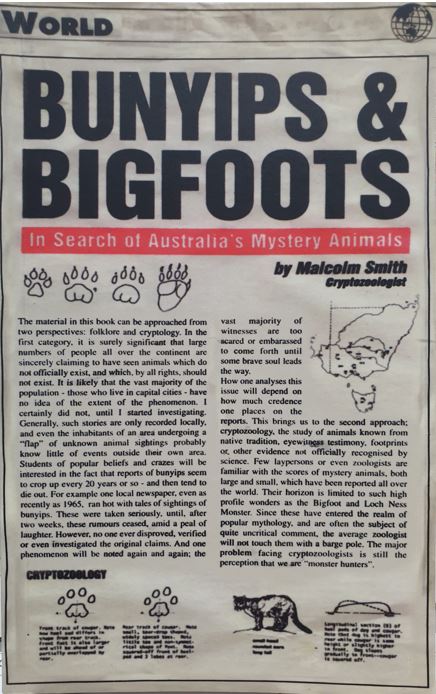
Well, maybe. As Smith himself admitted, it would have to be weird dog, but maybe this is more likely than it being a live mainland #thylacine…
An informal suggestion made here and there is that the animal might actually be a Banded hare-wallaby (Lagostrophus), a small macropod famous for its dark, horizontal stripes present across its back (image here by John Gould, in public domain)... 
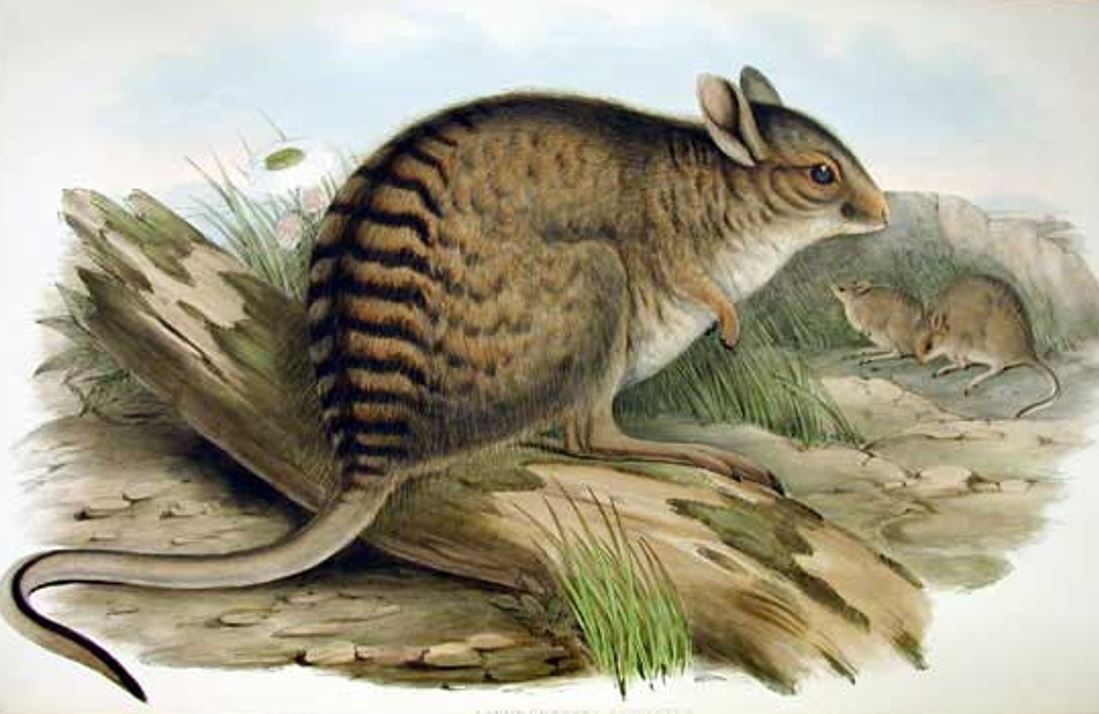
The fact that this animal sometimes rests with its tail held straight and inclined upwards means that this idea isn’t a bad one…
But if you scale Lagostrophus to the same size as the Cameron animal, some differences stand out: Lagostrophus doesn’t have a thickened tail base, its stripes are slimmer and less extensive laterally...
.... and its macropod hindlimbs mean that it can’t stand with the same hindlimb profile as seen in Cameron’s photos… 

Also (in a parallel with the thylacine itself) – Lagostrophus is absent from the Australian mainland (map from IUCN Red List of Threatened Species), its last records there dating to the early 1900s. In conclusion: I think Lagostrophus is irrelevant... 

So – what did Cameron actually photograph?
To accept Cameron’s photos as real, you have to accept that #thylacines (1) were still alive in 1985, (2) persisted in modern times on the Australian mainland, and (3) exist or existed as a morphologically distinct population in Western Australia.... 

That’s a lot to ask for in the absence of good evidence…
It should also be added that Cameron never revealed the precise location where the photos were taken, and in fact asked for $53,000 for this bit of information…
In Cameron’s defence, some have pointed to the fact that he was happy for the photos to be published in an authoritative, scientific venue (namely New Scientist) without payment, and this is despite the fact that he knew full well that they were potentially worth a lot of money…
It should be noted at this point that New Scientist is a commercial magazine, not a scientific, technical venue. But this isn’t known (nor is the difference between the two at all appreciated) to those outside the scientific community… 

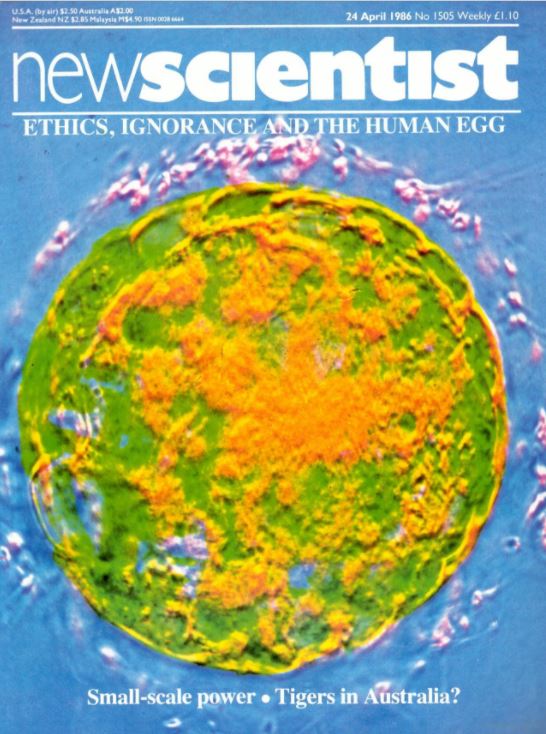

… so giving the photos to New Scientist would mostly be considered by researchers and cryptozoologists as ‘giving them up for scientific examination’, a move generally appreciated as philanthropic…
The fact that the photos can’t be _shown_, beyond doubt, to be hoaxed also means that some researchers are inclined to err on the side of caution…
However, the many red flags about Cameron’s story (including about the appearance of the animal, and Cameron’s slightly quirky and inconsistent encounter of what happened) don’t help…
I don’t think it is, or was, a real #thylacine, and I currently think it was a hoax of some sort, though exactly what it did involve… I’m not sure, and I doubt we’ll ever really know what happened…
That about brings thing to an end. The various books consulted while I compiled with thread are shown here…. #cryptozoology #books #bookcovers 



There are a reasonable number of other alleged modern #thylacine photos out there, and I may well look at them too in future instalments in this series. But I also have #Nessie photos and so many others to get through too…
This has been the latest in the #TetZoocryptomegathread series (follow the # for more). I might, in time, end up compiling them for a book or using them as the basis for a TV series… 
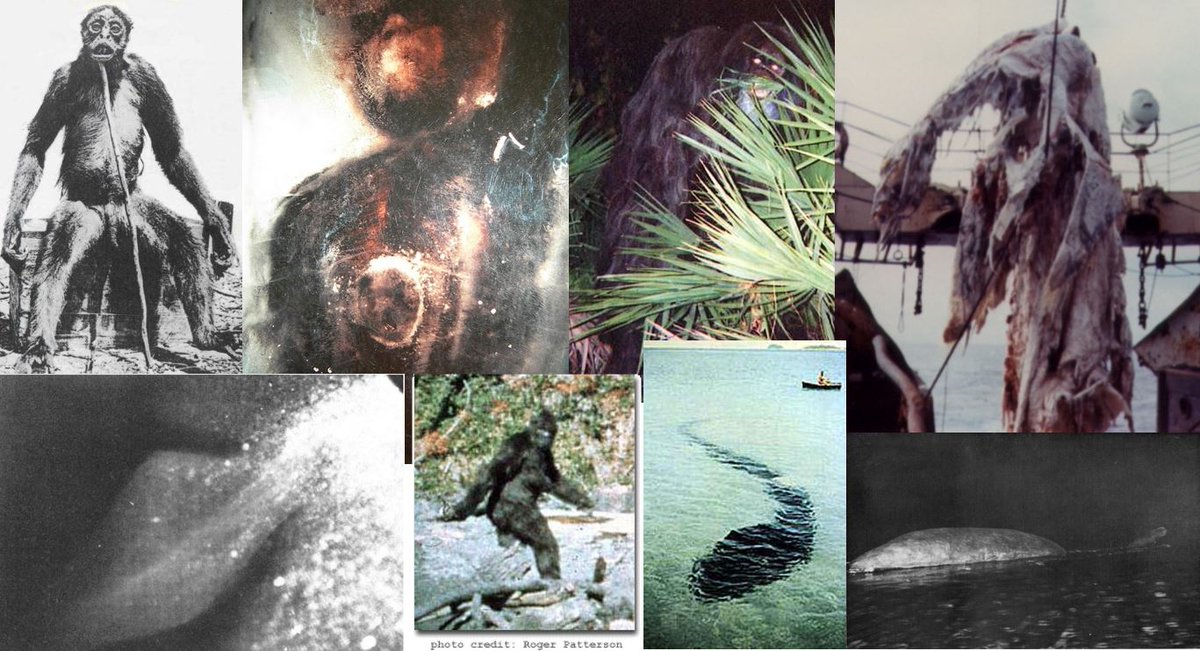
If you enjoyed reading this lengthy examination, check out my writing at Tetrapod Zoology (tetzoo.com). Until next time!
• • •
Missing some Tweet in this thread? You can try to
force a refresh


